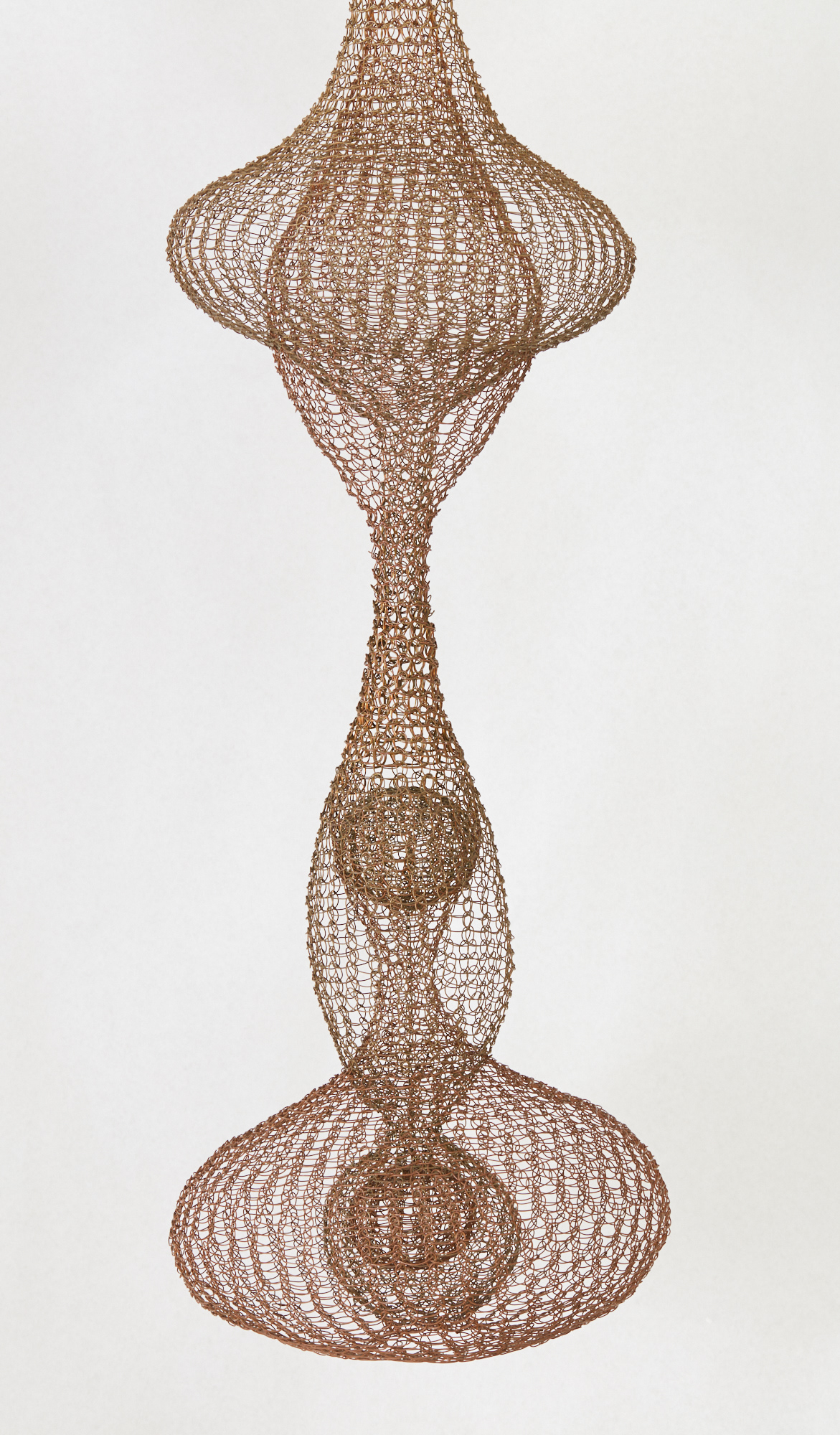Ruth Asawa. Drawing, Dance, and Architecture

Ruth Asawa’s airy, hourglass-shaped sculptures appear to float in space, though they are suspended from the ceiling. Beginning in 1949, and created throughout her fifty-year career, Asawa's multi-lobed sculptures made of looped wire, like Untitled (S.035, Hanging Six-Lobed, Multilayered Interlocking Continuous Form within a Form with Spheres in the Second, Fifth, and Sixth Lobes) (ca. 1962), defy categorization. They evoke traditional craft-like weaving and basketmaking, but their nonutilitarian forms demonstrate an interest in abstraction; their play with positive and negative space suggests both volume and weightlessness; and their attention to line, particularly evident in the shadows they cast, approaches drawing. The biomorphic forms and dimensionality of Asawa’s sculptures can be understood through the influence of both dance and architecture at Black Mountain College, where Asawa took rigorous design classes taught by Josef Albers, studied dance with choreographer Merce Cunningham,1 and met her husband, Albert Lanier, who became an architect. Though nonfigurative, the artist’s long, multi-lobed installations recall the proportions of the body and the built environment. While made up of a stable, rigid structure, their wavy and intertwining shapes are “vaguely anthropomorphic [in the] way they hold space, each one acting as an analogue for a human body.”2
Jennifer Gross, “Ruth Asawa: Dancers,” in Leap Before You Look: Black Mountain College, 1933–1957, ed. Helen Molesworth (Boston: Institute of Contemporary Art, 2015), 366. ↩︎
Helen Molesworth, “Imaginary Landscape,” in Leap Before You Look: Black Mountain College, 1933–1957, ed. Helen Molesworth (Boston: Institute of Contemporary Art, 2015), 25. ↩︎
